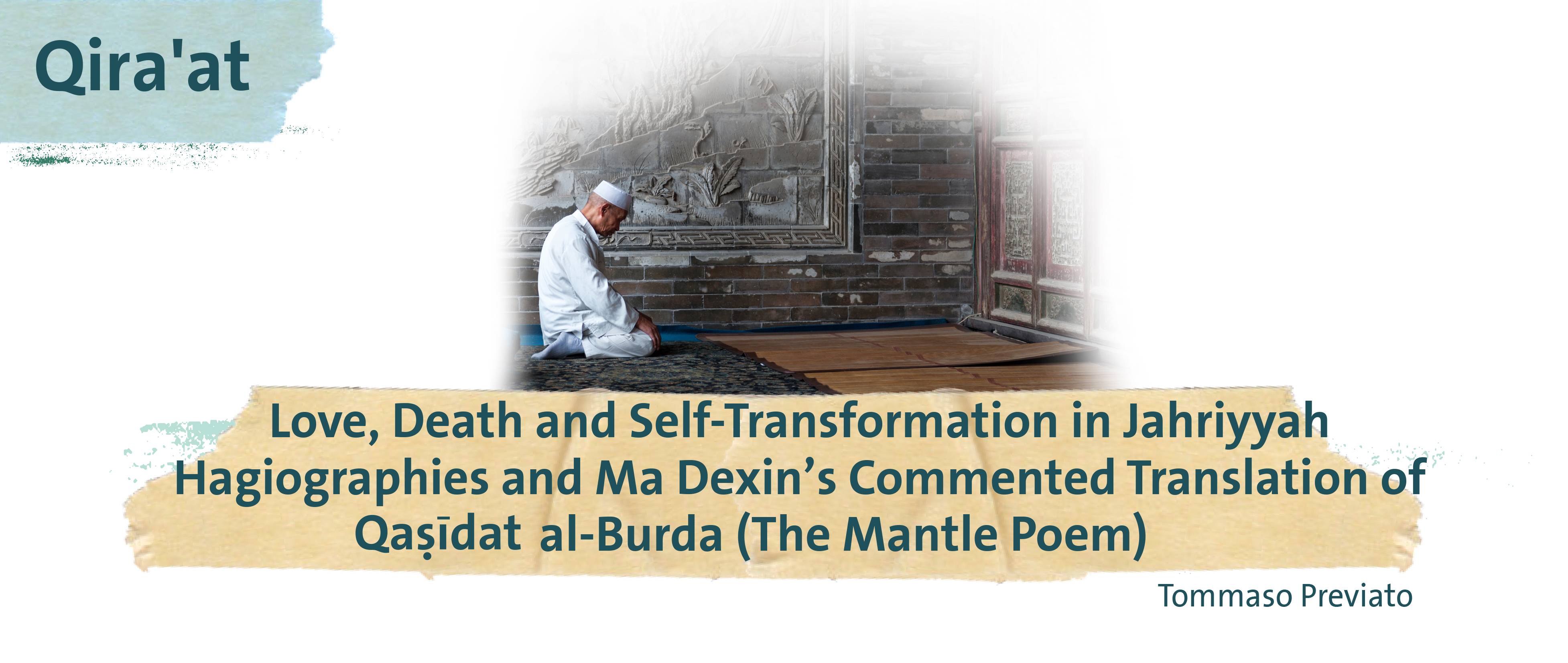Love, Death and Self-Transformation in Jahriyyah Hagiographies and Ma Dexin’s Commented Translation of Qaṣīdat al-Burda (The Mantle Poem)
There is no religion that does not seek answers to the questions of life and death or expound on the belief in an afterlife once the bodily self has dissolved. World religions touch upon these questions in varied ways, providing a source of moral behavior that steers people’s relationships with others and the divine. Most of the time, death is described as something one struggles to come to terms with, a struggle often associated with emotions of grief, fear, and despair. But there are cases where death is extolled as a joyful, even ecstatic rupture with worldly attachments or an opportunity for self-elevation. In these cases, death represents something more than just the physical dissolution; it may become an ascetic endeavor to achieve spiritual growth and unity with God. In the furthest extreme, death is sublimated through martyrdom, an act of surrender and pietistic devotion that is expected to accelerate this process of ecstatic identification. The present paper delves into narratives of martyrdom found in the hagiographical literature of Naqshbandi–Jahriyyah Sufism and the translation work of Ma Dexin (also known as ‘Abd al-Qayyum Rūḥ al-Dīn Yusuf, courtesy name: Ma Fuchu; b. 1794), a preeminent Hanafi scholar from Yunnan. Like some of his Jahriyyah contemporaries, Ma Dexin, in the later years of his life, played a significant part in the mid-nineteenth century Muslim uprisings against the Qing dynasty (1644–1912), dying a martyr in 1874.

